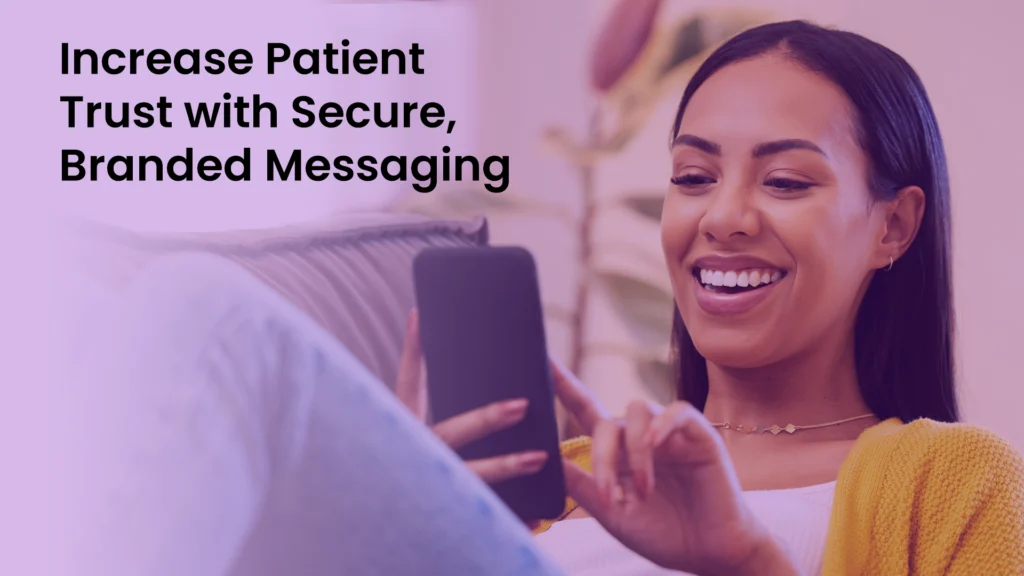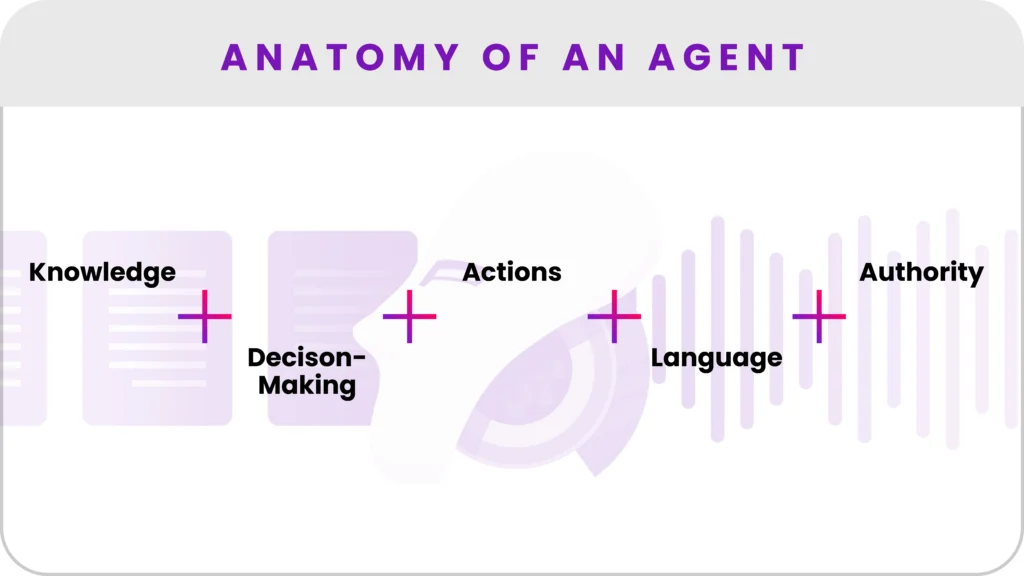Patient communication: an underrated backbone of quality care, and arguably one of the most significant factors within patient engagement. While it might sound simple, it’s often filled with intricacies that we can’t even wrap our heads around. And given the ever-evolving expectations of patients, healthcare communication standards have continued to rise alongside just about every other industry.
To improve patient engagement today, effective digital patient communication is no longer optional—and directly affects loyalty, outcomes and revenue. Many providers have taken the first steps by incorporating text messaging into their patient outreach strategies. However, research from our new report, “Patient Engagement Today: Key Trends Shaping Patient-Provider Communication,” confirms that telemarketing, spam or fraudulent SMS messages from unverified numbers can overwhelm patients, causing them to disengage or miss messages they truly do want to read. Additionally, automated texts with defined responses like “yes” or “1” are not cutting it today.
Our takeaway: automated text messaging via short-codes (providing limited responses) is falling short, frustrating patients and creating communication barriers in healthcare. Small, meaningful changes you make to patient-provider communication today can dramatically improve patient experience, engagement and care outcomes. Let’s talk about it.
The Promise of Healthcare Text Messaging
Texting holds immense potential to transform patient communication and engagement. By providing timely information, updates and personalized post-visit care, it can improve appointment adherence, medication compliance and overall health outcomes. Text messaging offers a simple, accessible way to bridge the gap between healthcare providers and patients, ensuring important information is delivered directly to their fingertips. As a cost-effective and efficient tool, it empowers patients to stay informed and connected, fostering better relationships and trust with their care teams.
Overall, it’s a simple, efficient and great way to connect with busy patients. After all, research from our new report, “Patient Engagement Today,” shows that 82% of patients find value in texting their healthcare providers.
After further research, however, we found that not all text messages are created equal – and some are driving patient frustration and even communication barriers in healthcare.
Spam & Fraudulent Messaging Are on the Rise (Cue the Patient Frustration!)
With the rise in fraudulent and spam messages, it’s becoming increasingly difficult for patients to distinguish legitimate communication. As a result, many are missing important messages simply because they don’t recognize the sender. For healthcare providers, this poses a significant challenge: when messages come from unfamiliar or inconsistent numbers, patients are more likely to overlook them—even when the information is timely and essential.
According to our new report, “Patient Engagement Today,” most patients (71%) report an increase in text messages from unfamiliar numbers, which often seem like scams. Among them, 87% say they are less likely to read messages from numbers they don’t immediately recognize.
This growing trend is fueled by businesses increasingly relying on “short-codes” — five- or six-digit numbers — to communicate with patients, instead of traditional 10-digit phone numbers. Short-codes have become the status quo in healthcare (among many other industries). While these texts might seem harmless – and like a logical solution for providers – they’re alienating patients due to several key issues.
Approximately three-quarters (76%) of patients say they’ve noticed the volume of short-code text messages increasing over the last five years, which is leading to frustration. Of that group:
- 89% of patients find them disruptive
- 65% of patients admit they often pay less attention to them
- 56% of those who pay less attention to them report missing important information
These numbers are significant and the limitations don’t just frustrate patients; they actively harm care delivery as patients often ignore or dismiss short-code messages, leading to missed appointments, unpaid bills and incomplete care plans.
But patients are frustrated with more than just the short-code text message avalanche. It’s the one-way or automated, limited responses that are truly driving communication barriers in healthcare.
How You (Text) Message Matters
As patient expectations evolve, so must the tools healthcare providers use to engage them.
The days of transactional Y or N text exchanges are gone, and patients are demanding more from their providers. Based on our new report, most patients (55%) reported instances of frustration when they could only respond to automated texts with set answers like “yes” or “1”.
Of that group, 74% said they ended up having to call their provider’s office anyway, defeating the whole purpose behind text messaging of improving the patient experience and reducing staff burden.
Furthermore, three-quarters (76%) of patients believe the ability to initiate a conversation with their provider’s office via text about any topic would improve their healthcare experience. This means that providers that prioritize conversational texting approaches tailored to patients’ needs will stand out in delivering a better experience.
According to Deloitte research, hospitals with “high patient-reported experience” scores have higher profitability (3-4% higher net margin).
Providers Must Move Beyond Basic Texting to Foster Engagement and Strengthen Trust
For providers, these insights are substantial, giving clear guidance on how to move forward: conversational, two-way texting from a recognizable 10-digit phone number that can be programmed into patients’ phones will help break through the noise of spam and fraudulent messaging and ease patient frustration around automated, pre-defined text messages. By embracing AI-powered patient engagement strategies, providers will be able to meaningfully engage with patients while improving staff workload.
Nearly nine in 10 (89%) of patients are more likely to engage if they receive a text from their provider with the same 10-digit phone number. In addition:

By evolving beyond impersonal short-codes and embracing 10-digit phone numbers that patients recognize and trust, providers can significantly enhance engagement and rebuild confidence in text messaging as a reliable communication channel. Prioritizing familiarity and personalization not only strengthens the provider-patient relationship but also ensures critical information is delivered, received and acted upon—improving both patient outcomes, operational efficiency and provider revenue.
Why Patient Communication Matters More Than Ever
Poor communication isn’t just a mild inconvenience. It has tangible consequences for patient health and provider success.
- Declining Health Outcomes: Patients often skip or delay appointments due to communication frustrations. More than 47% of patients report avoiding scheduling altogether when they struggle to connect with their providers, with 61% saying these delays negatively impacted their health.
- Patient Dissatisfaction and Loyalty Risks: Today’s patients expect the same seamless, personalized experiences they receive in other industries like retail or banking. A full 63% of patients say they are willing to switch providers over poor communication experiences—a percentage that rises significantly among younger, tech-savvy individuals.
- Provider Revenue at Stake: Missed appointments, unpaid bills, and poor engagement all impact a provider’s bottom line. For example, 30% of patients admit that difficulties communicating by text have led to forgotten or missed bill payments—88% of whom say better communication could have solved the issue.
AI-powered communication (including virtual agents, both voice and text) is no longer a minor operational need; it is a strategic necessity for quality care and maintaining a competitive edge.
Download the full report here to learn more about how you can enhance your patient engagement using AI-powered strategies that work.
About the Report:
The report surveyed 1,000+ U.S. patients who are responsible for their own healthcare decisions and have engaged with the healthcare system over the last 12 months. All respondents reported they have communicated with a healthcare provider via text messaging.



